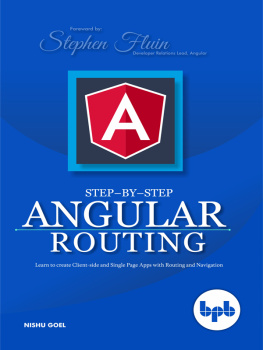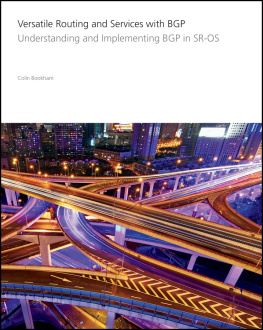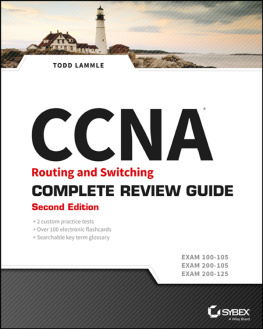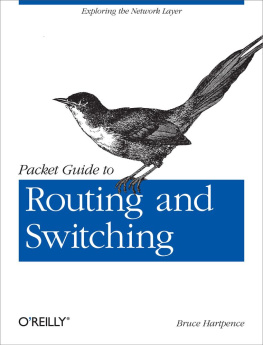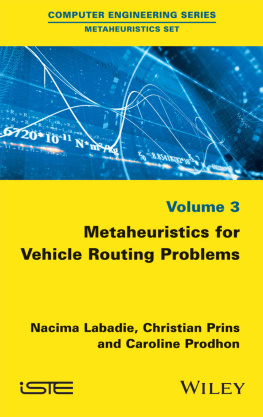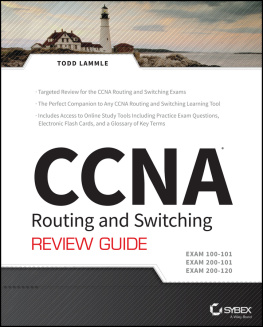Appendix A. Answers to Chapter Review Questions
Describe why postal addresses and telephone numbers are routable. |
Answer: A postal address has three components that can be used to deliver mail: state, city, and street. A phone number has an area code and exchange. At the core layer, mail can be delivered to the next post office based on only the state or city and state information. A phone number is delivered at the core layer based on the area code. |
What is the purpose of a default route? |
Answer: A default route is used if there is not a specific entry in the routing table for the destination. |
Describe the difference between routing and switching. |
Answer: Routing moves a letter or telephone call to the access layer (as in a street or telephone exchange). Switching makes the final delivery. A switching decision is made on the part of the address that is not used in routing (as in the street number or last four digits of a phone number). |
What does the term information hiding mean in relation to route summarization? |
Answer: At the core layer in the postal system, the only information that is needed to make a routing decision is the state or city/state information. The specific street names and street numbers are hidden, the core layer does not need this information. At the core layer in the telephone system, the area code is used to make a routing decision. The specific exchange or last four digits of the phone number are not needed, or hidden, from the core layer. |
How does the use of a hierarchical routing structure (access, distribution, and core) enable a scalable delivery system? |
Answer: If a delivery system is not divided into access, distribution, and core layers, every point in the system needs to maintain every possible destination address to make a delivery decision. The use of a layered system means each layer needs only the information necessary to deliver to the next layer, either above or below. |
Why are multiple protocols used, such as a package, addressing, delivery, and transportation, instead of using one protocol defining everything? |
Answer: Using multiple protocols is modular and allows changes to one protocol without affecting the others. For example, if the addressing protocol is dependent on the delivery protocol, changes to one would imply changes need to be made to the other. |
Can you think of another familiar system that routes using a hierarchical delivery system? |
Answer: The airport system. At the core routing level, there are major hub airports such as Denver, Chicago, New York, and Atlanta. The core airports are responsible for routing people and cargo to major geographical areas. Core airports connect with regional airports that serve a specific area; regional airports are at the distribution layer. Finally, to reach your final destination, you can take a bus, a cab, a train, or rent a car. This can be considered the access layer. |
Explain how a letter from New York City to San Diego is routed using the address information. |
Answer: The source address is not used unless the letter needs to be returned to the sender. Using the destination address, the access level post office in New York examines the state, city, and street information to determine if it is directly connected to the destination. If not, the letter is sent to the distribution layer post office using a default route. The distribution layer post office also examines the state, city, and street information to determine if it is directly connected to an access layer post office servicing the particular street. If it isn't, the letter is routed to the core level using a default route. The core level post office examines the state name, and if the state name does not equal New York, the letter is delivered to the core post office for the state of California. The California core post office delivers the letter to the distribution post office that handles the city of San Diego. The San Diego distribution post office delivers the letter to the access post office that handles the destination street. Finally, the access level switch delivers the letter to the proper destination. |
What are the access, distribution, and core components of a postal address? |
Answer: The street name and number are the access layer components. The city name is the distribution layer component. The state name is the core layer component. |
What are the access, distribution, and core components of a North American phone number? |
Answer: The last four digits are the used at the access layer to identify a particular telephone. The next three numbers are used at the distribution layer to identify an exchange that services several phone numbers. The area code is used at the core level for routing between different regions. |
This is a speed drill. Using only your head, convert the following binary numbers to decimal. 11100000 11111100 10000000 11110000 00111111 |
Answer: 224, 252, 128, 240, and 63 (64 1) |
Convert FACE123416 to dotted decimal. |
Answer: FA16 = 25010, CE16 = 20610, 1216 = 1810, and 3416 = 5210 FACE123416 = 250.206.18.52 dotted decimal |
Convert 101000101111010110011101100010112 to hexadecimal. |
Answer: A2F59D8B |
Convert 101000101111010110011101100010112 to dotted decimal. |
Answer: Convert to dotted hexadecimal first, and then convert each hexadecimal number pair to decimal. A2.F5.9D.8B then 162.245.157.139 |
Convert 101000101111010110011101100010112 to octal. |
Answer: 242753166138 |
True or False. Converting between number bases is fun. |
Answer: True. |
Convert 123456708 to hexadecimal. |
Answer: Convert each octal digit into three binary digits, and then convert the binary result to hexadecimal. 001 010 011 100 101 110 111 000 0010 1001 1100 1011 1011 1000 29CBB8 |
Convert 7342158 to binary. |
Answer: 111 011 100 010 001 101 |
Convert 73421516 to binary. |
Answer: 0111 0011 0100 0010 0001 01012 |
| 10: | Convert 26298803110 to hexadecimal. |


